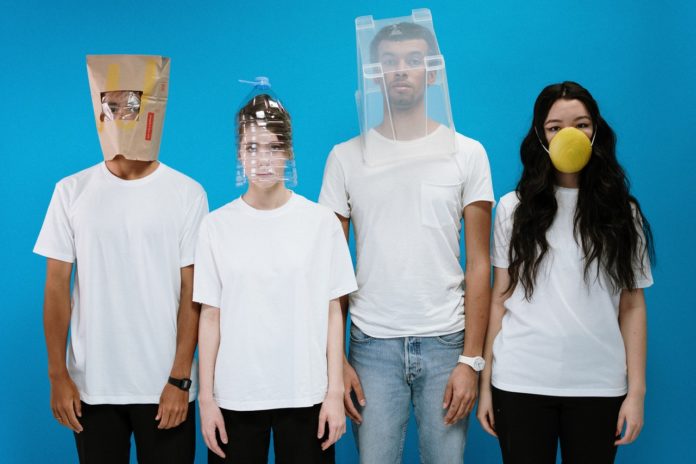Wearing a face mask in South Africa is mandatory. And not wearing a face mask in public is considered a criminal offence. But why?
In the very early stages of the Covid-19 outbreak, there were mixed messages about the efficacy of wearing masks. While the World Health Organisation (WHO) has consistently encouraged mask wearing, other health officials were skeptical – in part because there was a well-reported shortage of masks and officials were worried that there would not be enough masks for health professionals. But according to the World Health Organisation (WHO), the use of masks is part of a “comprehensive package of the prevention and control measures that can limit the spread of certain respiratory viral diseases, including COVID-19”.
What does a mask actually do?
The masks are used for protection of healthy persons and for control to prevent the spread and transmission of the virus.
The WHO says studies of influenza and other coronaviruses shows the use of a medical mask can prevent the “spread of infectious droplets from a symptomatic infected person (source control) to someone else and potential contamination of the environment by these droplets”.
So what does it mean that not wearing masks is a criminal offence?
Early in July, president Cyril Ramaphosa announced stricter regulations around mask wearing. He said offices and other public spaces would need to ensure people without wearing a mask aren’t allowed to enter the building. When announcing the regulations, Lamola said the government would take the steps to criminalise the offence of not wearing masks.
“It has made the lives of members of the public difficult including law enforcement officers’ lives very difficult if people are not wearing a mask in a particular place,” said Lamola. While it is a criminal offence, the duty of enforcement would still be with compliance officers.
Opposition to masks
There has been considerable opposition to masks in South African and indeed elsewhere. There have even been protests in America and England against the wearing of masks. While the science shows wearing masks does not affect breathing, much opposition has stemmed from concerns about lack of oxygen. Many are opposed to it simply because it disrupts their normal way of life.
Types of masks
The most common masks are surgical medical masks.
These are disposable masks most commonly used by medical professionals. While many people began using these when masks were made mandatory, we are encouraged to use cloth masks instead.
Cloth masks are available in a rich variety of colour and patterns. Some fashion designers have used this opportunity to come up with interesting designs for the masks. People have even invented masks for people with hearing impairments.
And while many local designers and creators have made a flourishing business out of masks, there have been reports that some masks imported from China around the world are being made allegedly with forced Uighur labour. The Uighurs are a persecuted minority subjected to mass detentions, surveillance and restrictions on their cultural and religious beliefs in China.
Wearing the mask safely
Wearing a mask is not enough. More importantly people need to understand how to wear a mask correctly. If the mask is worn incorrectly, it can cause more harm than good.
Don’t wear the mask with the breathing valves. Please.
The WHO and other medical authorities have all said a simple cloth mask is sufficient as the minimum protection. Many people have however taken to wearing masks they think provide extra protection or best comfort. One of those masks is a popular cloth mask with breathing valves.
Those masks provide comfort to wearers by allowing air to escape the mask when the wearer exhales. With the same air the wearer exhales, the virus is given a chance to escape. Kai Singbartl, a medical doctor from Arizona told US Today it defeats the purpose. “They are unfiltered, those valves are the path of least resistance so to speak, it’s easier to exhale and get rid of the heat and moisture,” said Singbartl adding the wearers are exhaling viral droplets and particles.
Is wearing a mask really something strange?
While the rest of the world is experiencing wearing masks for possibly the first time, it is not out of the norm for many East Asian countries. Wearing surgical or cloth masks is something that has been very common in East Asian countries. The behaviour of wearing facemasks began in Japan during the early years of the 20th century during a massive pandemic of influenza. It’s now become a part of the culture of countries like Japan, South Korea and China. Wearing masks is about a social courtesy to avoid transmitting any germs to others, especially healthy people.
A Quartz article notes that wearing a mask in East Asian countries predates the “germ theory of disease, and extends into the very foundations of East Asian culture.”









